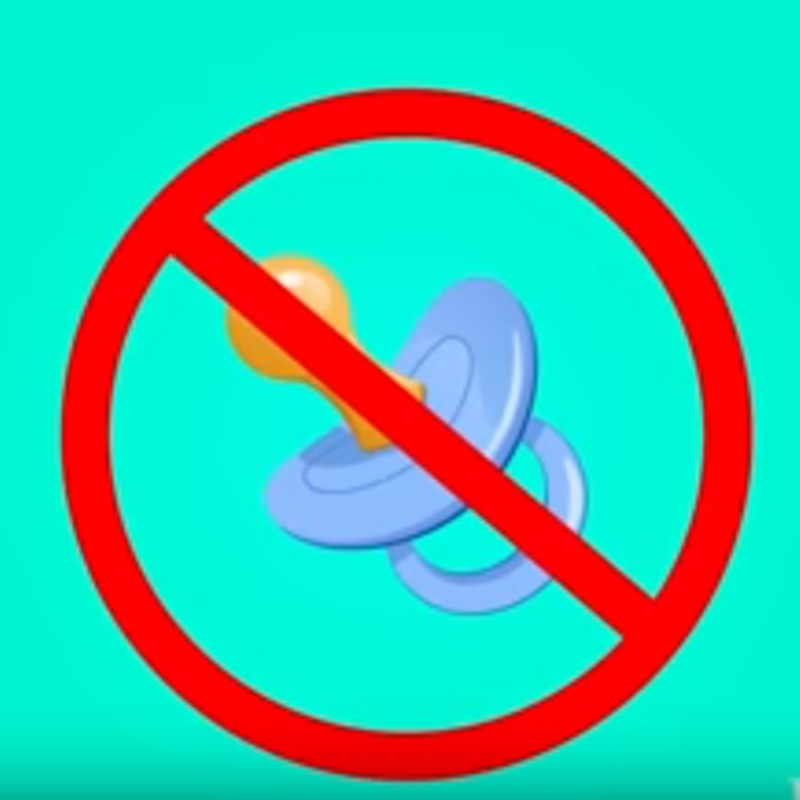- Study Says Most Parents Don’t Use Car Seats In Ride Share Vehicles Like Uber
- This 12-Year-Old Boy Is A Sophomore Aerospace Engineering Major!
- Fire Safety Experts Warn Of Hand Sanitizer Danger After A Mom and Kids Escape House Fire
- Recall Alert: Peaches May Be The Cause Of Salmonella Outbreak, 68 People Ill
- Summer Vacation In The Days Of COVID: Tips To Stay Safe
- How To Safely Grocery Shop During The Coronavirus Pandemic
- Michigan Teen With Vape-Related Illness Undergoes Double Lung Transplant
- Teen Kicks Off Anti-Vaping Campaign From Hospital Bed
- Teenager Receives Life Sentence For Strangling Sister To Death Over A Wi-Fi Password
- Toddler Falls To Death From 11th Deck of Cruise Ship
Dentist Comes Up With Easy Product To Wean Toddlers Off Their Pacifier


Pacifiers provide soothing and sucking to comfort little infants and toddlers. There comes a time when it has to go and that can sometimes be hard.
Before the age of 2, a baby won’t suffer any long-term damage to her teeth from a pacifier. After the age of two, problems can start. Pacifier use beyond age four, when adult teeth begin to form, can mean long-term dental issues.
Roughly 60 percent of children use pacifiers, however weaning them off of them can be a battle for parents.
A Pittsburgh-area dentist has created a solution to this dilemma.
Dr. Arlene D’Alesio, who’s also a Mom, has invented a product that is appearing in stores nationwide
It’s called the Lily Method Pacifier Weaning System.
There are 5 pacifiers in the system, each with the nipple cut open wider to a precise width.
“The nipple opening increases, so their sucking satisfaction decreases. … It becomes more like a toy and they lose interest in it very quickly,” D’Alesio said.
The system is designed to work in as few as 5 days! D’Alesio said the system works, but only as long as parents are ready to start the process. Parents need to commit to it and throw out ALL of the child’s other pacifiers.
“You have to find the pacifiers in the car seat, in the crib, at Grandma’s, everywhere. Because pacifiers are everywhere. They seem to multiply,” said D’Alesio.









0 comments